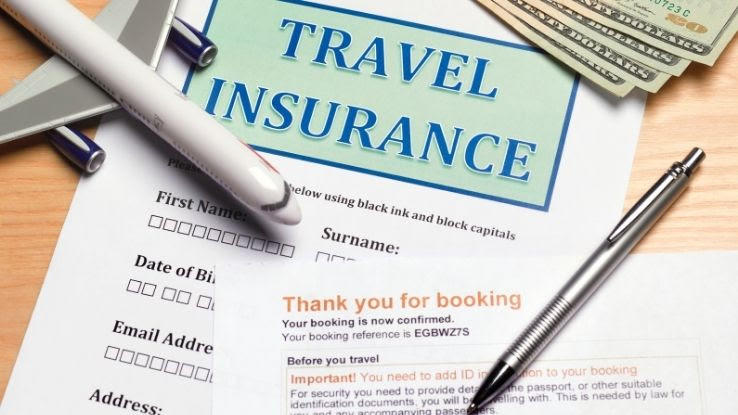Not known Factual Statements About Pacific Prime
Table of ContentsThe Best Strategy To Use For Pacific PrimePacific Prime Fundamentals ExplainedThe Basic Principles Of Pacific Prime Pacific Prime for BeginnersWhat Does Pacific Prime Do?

This is due to the fact that the information were collected for a duration of strong financial performance. Of the estimated 42 million people that were uninsured, almost about 420,000 (regarding 1 percent) were under 65 years old, the age at which most Americans end up being qualified for Medicare; 32 million were grownups between ages 18 and 65, around 19 percent of all adults in this age; and 10 million were youngsters under 18 years of age, about 13.9 percent of all youngsters (Mills, 2000).
These estimates of the number of individuals without insurance are generated from the annual March Supplement to the Existing Populace Study (CPS), carried out by the Census Bureau. Unless otherwise noted, national estimates of individuals without medical insurance and proportions of the populace with various kinds of insurance coverage are based upon the CPS, the most extensively made use of source of quotes of insurance policy coverage and uninsurance rates.
Pacific Prime for Dummies

Still, the CPS is particularly beneficial because it produces yearly price quotes reasonably rapidly, reporting the previous year's insurance protection estimates each September, and due to the fact that it is the basis for a consistent collection of price quotes for greater than two decades, enabling analysis of patterns in insurance coverage over time. For these reasons, along with the extensive use the CPS in other research studies of insurance protection that are provided in this report, we rely upon CPS quotes, with constraints noted.

The quote of the number of without insurance people broadens when a population's insurance status is tracked for a number of years. Over a three-year duration starting early in 1993, 72 million people, 29 percent of the united state population, were without insurance coverage for at least one month. Within a solitary year (1994 ), 53 million individuals experienced a minimum of a month without protection (Bennefield, 1998a)
6 out of every 10 uninsured grownups are themselves employed. Although functioning does improve the chance that and one's relative will have insurance coverage, it is not a guarantee. Also members of households with two permanent breadwinner have nearly a one-in-ten opportunity of being uninsured (9.1 percent without insurance price) (Hoffman and Pohl, 2000).
The smart Trick of Pacific Prime That Nobody is Discussing
New immigrants account for a significant proportion of individuals without medical insurance. One evaluation has actually associated a substantial portion of the current development in the size of the U.S. uninsured populace to immigrants that arrived in the country between 1994 and 1998 (Camarota and Edwards, 2000). Current immigrants (those that came to the United States within the past 4 years) do have a high rate of being without insurance (46 percent), but they and their kids make up simply 6 percent of those without insurance policy nationally (Holahan et al., 2001).
The connection in between medical insurance and accessibility to care is well established, as recorded later in this chapter. The relationship in between wellness insurance policy and wellness results is neither direct neither simple, a comprehensive scientific and health and wellness services research study literary works links wellness insurance policy coverage to enhanced access to care, better quality, and boosted individual and populace health and wellness status.
Levels of evaluation for taking a look at the effects of uninsurance. It concentrates specifically on those without any type of wellness insurance coverage for any length of time.
Pacific Prime Things To Know Before You Buy
The troubles encountered by the underinsured are in some aspects similar to those encountered by the without insurance, although they are normally less serious. global health insurance. Uninsurance and underinsurance, nonetheless, entail distinctly various policy problems, and the methods for resolving them may differ. Throughout this research study and the five reports to follow, the main focus gets on individuals without medical insurance and hence no support in spending for health and wellness care beyond what is readily available through charity and safeguard institutions
Wellness insurance policy is next page an effective variable influencing receipt of care due to the fact that both individuals and medical professionals reply to the out-of-pocket price of solutions - https://www.imdb.com/user/ur179624537/. Health insurance coverage, nevertheless, is neither needed nor adequate to get to medical services. The independent and direct result of health and wellness insurance policy protection on accessibility to health and wellness services is well developed.
Others will obtain the wellness care they require also without health and wellness insurance policy, by paying for it expense or seeking it from service providers that use care totally free or at very subsidized rates. For still others, health insurance coverage alone does not make sure receipt of treatment due to various other nonfinancial barriers, such as an absence of healthcare providers in their neighborhood, limited access to transport, illiteracy, or linguistic and social differences.
Pacific Prime Can Be Fun For Everyone
Formal research regarding without insurance populations in the United States dates to the late 1920s and early 1930s when the Committee on the Cost of Treatment created a series of reports concerning funding physician office brows through and hospitalizations. This problem came to be significant as the numbers of medically indigent climbed throughout the Great Anxiety.